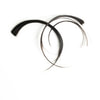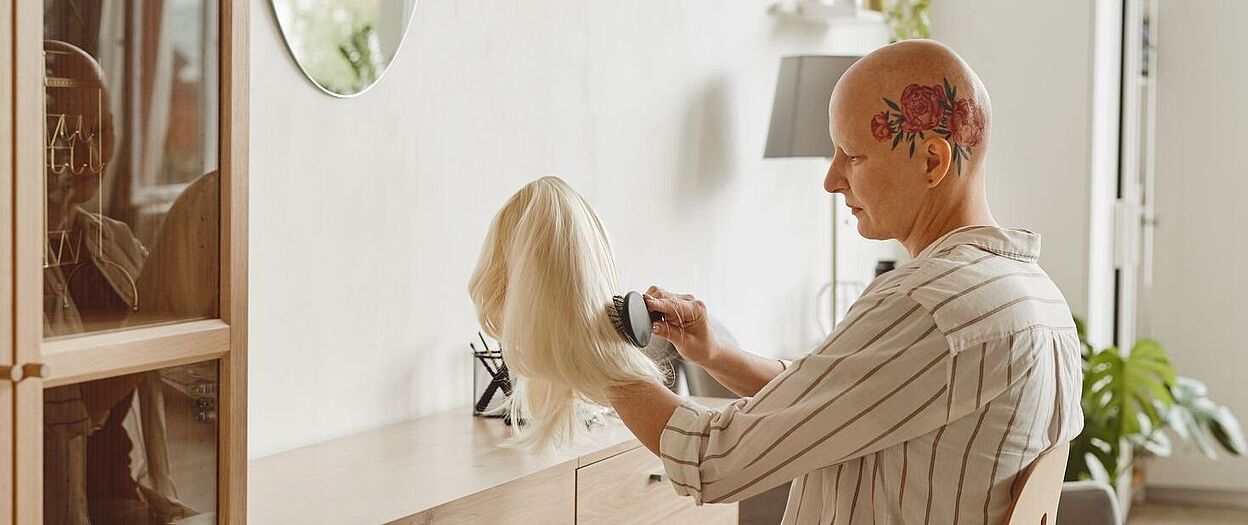|
I first posted about the breakthrough of Stem Cell Hair Restoration last year  Hair loss is a common problem that affects millions of people worldwide. While there are many treatments available, from medications to hair transplant surgery, not all of them are effective or suitable for everyone. In recent years, stem cell hair restoration has emerged as a promising new approach to hair regrowth that offers a number of unique benefits. In this article, we’ll explore what stem cell therapy for hair restoration is, how it works, and why it might be the right choice for you. What is Stem Cell Hair Restoration?Stem cell hair restoration is a cutting-edge treatment that uses the body’s own stem cells to stimulate hair regrowth. Stem cells are unspecialized cells that can develop into many different types of cells in the body. In hair restoration, stem cells are extracted from the patient’s own body, typically from fat tissue or blood, and then injected into the scalp to promote hair growth. The idea behind stem cell therapy for hair restoration is that by introducing these powerful cells into the scalp, they can help regenerate damaged hair follicles and stimulate new hair growth. Unlike traditional hair transplant surgery, which involves transplanting individual hair follicles from one part of the scalp to another, stem cell hair restoration aims to rejuvenate the entire scalp and promote overall hair health. Read the rest of the article here
8/22/2024 There's A Lot Of Fake Hair In HollywoodMale Celebs Who Have Been Candid About Using Wigs And Surgery To Get Their Locks
"People were absolutely obsessed with my hair, or lack of it, for years. Then I started wearing a wig and virtually no one’s mentioned it since.” 5/15/2024 I got a hair transplant in Istanbul...I got a hair transplant in Istanbul, a sanctuary for balding men. It pulled me out of a dark place. It was a scorching August day in 2022 and I was lounging at the pool of the Mercedes Club, my fitness center in midtown Manhattan. I had invited one of my best friends Bennett to spend the day with me.
When he walked onto the pool deck and took off his hat, I nearly passed out. A year ago, he was essentially a bald headed man. But today — about eight months after he took a trip to Turkey — he had a fully restored hairline. Happiness. Jealousy. Shock. Intrigue. Fear. I was flooded with emotions. Bennett, who's three years older than me and was a bit further along in the balding process, had been my hair loss mentor. But now, he was one of the growing number of men who traveled 5,000 miles to Istanbul, the global capital for hair transplant surgery. According to the Turkish Health Tourism Association, about one million people traveled to Turkey for a hair transplant in 2022, spending about $2 billion. Balding has become huge global business in the past two decades. It's projected to be worth over $11 billion by the end of 2024. So far, no matter how many new, promising pills and treatments hit the market, none have made the transplant redundant. If anything, it's booming, and Turkey has built a reputation as the go-to destination. Looking at Bennett's luscious hair poolside was the first moment I seriously considered joining the ranks of the millions of men who have traveled to what's become known as "Hairstanbul." Second hair needs intensive and special care, especially after the summer. The gfh, Society for Hair Aesthetics, gives tips on how to care for a second hair in the bathroom at home: Summer is coming to an end and often the hair has suffered from high temperatures, strong sun and UV radiation. Now it's time again: get to the hair care! For people who rely on hair replacements due to hair loss, this means a little more than just jumping in the shower. Scalp protection and professional care It is important to use the right hair replacement care products, because normal hair care products are only suitable for natural hair that has grown, but not for hair replacement. Special products ensure a long life for the hair replacement. The overall durability of the hair replacement depends on how often the hairpiece or wig is worn and how professionally it is treated and cared for. A permanent hair integration, for example, has to be removed and reattached every four to five weeks, since your own hair continues to grow. Under these conditions, a hairpiece can last between eight and ten months. Second hair: washing, caring for, styling Basically, it is important to distinguish whether the wig or hairpiece is made of real hair or synthetic fibers. Because the requirements for care and handling are fundamentally different. Real hair is basically treated like your own hair: it can be washed, blow-dried, treated with curlers and straighteners, even dyed and permed. However, as with natural hair, the hairstyle only lasts a few days. Human hair care - this is how it works:
Synthetic hair care - Do's & Don'ts Do's:
Don'ts:
Source: gfh, Society for Hair Aesthetics from TopHair.de
Celebrity hairstylist Jay Small shares the simple ways men can bulk up thin strands and hide hair loss If you're losing your hair, going in for a haircut might feel like the last thing you want to do. But a smart, stylish cut can make thinning hair appear fuller, according to celebrity hairstylist Jay Small. Small has two decades of experience that includes work with celebrities like Matt Damon, Luke Grimes, and Noah Centineo. He also cofounded Arey, a dietary supplement and hair serum brand for aging and graying hair. The stylist told Insider that "hair thinning and hair loss for men, specifically," is the most common issue he encounters at the salon. Here are his top tips for making thinning, aging hair appear fuller and healthier. A comb-over can look chic if done properly Don't dismiss the comb-over, Small said, especially one done at the hands of a skilled stylist. "I know it's a cliché to talk about a comb-over," he said, but "there are ways in which you can leave a little bit of hair and not have it be very obvious." He recommends a comb-over to some clients who are losing a significant amount of hair on the crown of their head. But maintaining a chic comb-over requires more frequent visits to the salon, to make sure the combing isn't too obvious. A man with thinning hair who chooses to rock a comb-over might need to visit their stylist every four to six weeks to ensure the remaining hair remains neat and not overgrown. Small also recommends using a powdered dry shampoo to minimize greasiness, which can make hair lie flat on the scalp. Keeping hair dry can add volume, making your hair look fuller. He says look for a dry shampoo that is not aerosolized — those spray cans can be loaded with up to 95% propellants like benzene, which isn't actually helping absorb any oil; it's just pushing the spray out of the can. Also avoid dry shampoos with alcohol in them, which can dry out your scalp. Instead, find a small bottle of dry shampoo powder, ideally one where 100% of the ingredients target oil absorption. Consider changing your part or chopping off some length to help your hair look fuller If you're noticing a visible bald spot on your head, you might want to change up your part so more hair covers the exposed thinning area, Small said. Though the change might feel "awkward" at first, the stylist recommends trying out a new part with wet hair and blow-drying your hair in the direction of the part. Changing your part later on, once hair is dry, might make the hair "stick up" unnaturally, Small said. If you happen to have a longer hairstyle, chopping off some of that length can also help make hair look fuller. "The longer your hair is, the finer your hair will look," he said. Finally, don't let your hair loss deter you from keeping your scalp healthy and clean. If you wash your hair frequently, find a gentle shampoo that won't over-cleanse. You may also want to consider a weekly scrub, like an acid-based exfoliating treatment that can help "balance the bacteria" on your scalp, Small said. Above all, be open with your hair stylist Small says he understands it can be hard for clients to bring up new hair loss issues with their stylist. "A lot of times people aren't really willing to talk about it," he said. He tries to find "tasteful" ways to broach issues or changes he's seeing on a particular client's scalp. "Our job is to have a conversation that a wife or a friend might not have," he said. from Business Insider
|
Hair by BrianMy name is Brian and I help people confidently take on the world. CategoriesAll Advice Announcement Awards Balayage Barbering Beach Waves Beauty News Book Now Brazilian Treatment Clients Cool Facts COVID 19 Health COVID 19 Update Curlies EGift Card Films Follically Challenged Gossip Grooming Hair Care Haircolor Haircut Hair Facts Hair History Hair Loss Hair Styling Hair Tips Hair Tools Health Health And Safety Healthy Hair Highlights Holidays Humor Mens Hair Men's Long Hair Newsletter Ombre Policies Procedures Press Release Previous Blog Privacy Policy Product Knowledge Product Reviews Promotions Read Your Labels Recommendations Reviews Scalp Health Science Services Smoothing Treatments Social Media Summer Hair Tips Textured Hair Thinning Hair Travel Tips Trending Wellness Womens Hair Archives
June 2025
|
|
Hey...
Your Mom Called! Book today! |
Sunday: 11am-5pm
Monday: 11am-6pm Tuesday: 10am - 6pm Wednesday: 10am - 6pm Thursday: By Appointment Friday: By Appointment Saturday: By Appointment |






 RSS Feed
RSS Feed